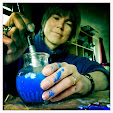The RSPB commissioned these six images to be used in their visitors’ centre on Islay. They depict the wildlife of the flooded meadows at the head of Loch Gruinart, and will be displayed along the sill of the huge picture-window that looks out across the fields. It’s possible to get very close views of all the wildlife on the reserve, and I spent a wonderful few days making my field-sketches here.
The pictures are all hand made screen prints from an edition limited to three prints of each image. All money from the sale of the first print will go to fund further RSPB projects on Islay.
The pictures chart the life of these meadows from January through to December.
The story starts on the left of the display, with the flooded winter fields.
Winter rain is held back by sluice gates, so the flooded fields can be used by ducks such as wigeon and pintail. Hares also feed on the rich grassland, which in Spring are covered in daisies, buttercups and marsh marigolds.
As the weather warms, these damp fields become full of insects. Nesting waders, like lapwing, find plenty of food for their chicks. Roe deer graze here, and may be chased by territorial birds.
Cattle manure is spread on the middle of the field to make a Corncrake Corridor. Corncrakes rely on this shelter when they return from Africa in April. Breeding snipe use the fence posts to survey their territory.
In late summer, once the corncrakes have fledged, the fields are cut for silage. Starlings feed in the stubbles. Cattle graze any rough vegetation, in preparation for our winter visitors.
In October many thousands of barnacle geese arrive from their breeding grounds in Greenland. Our mild, damp climate means that the grass grows throughout the winter. The geese can graze here, safe on the reserve.
Several thousand white fronted geese spend the winter feeding on the reserve. Along with the barnacle geese, they roost at night on Loch Gruinart, safe from predators. Whooper swans also make the reserve their winter home.














